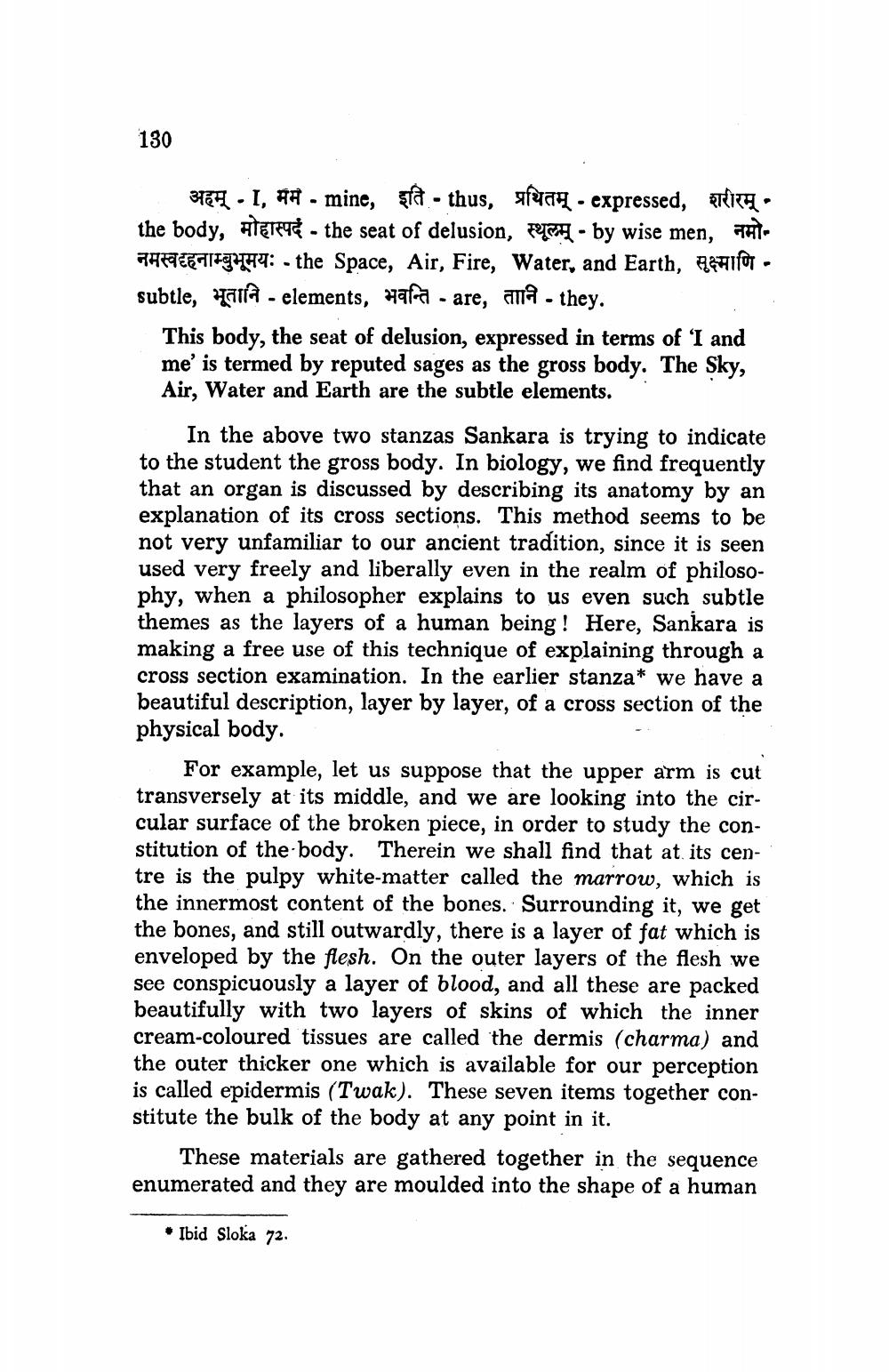________________
130
अहम् - I, मम - mine, इति - thus, प्रथितम् expressed, शरीरम् - the body, मोहास्पदं - the seat of delusion, स्थूलम् - by wise men, नमो: - the Space, Air, Fire, Water, and Earth, subtle, भूतानि elements, भवन्ति are, तानि - they.
.
This body, the seat of delusion, expressed in terms of 'I and me' is termed by reputed sages as the gross body. The Sky, Air, Water and Earth are the subtle elements.
In the above two stanzas Sankara is trying to indicate to the student the gross body. In biology, we find frequently that an organ is discussed by describing its anatomy by an explanation of its cross sections. This method seems to be not very unfamiliar to our ancient tradition, since it is seen used very freely and liberally even in the realm of philosophy, when a philosopher explains to us even such subtle themes as the layers of a human being! Here, Sankara is making a free use of this technique of explaining through a cross section examination. In the earlier stanza* we have a beautiful description, layer by layer, of a cross section of the physical body.
For example, let us suppose that the upper arm is cut transversely at its middle, and we are looking into the circular surface of the broken piece, in order to study the constitution of the body. Therein we shall find that at its centre is the pulpy white-matter called the marrow, which is the innermost content of the bones. Surrounding it, we get the bones, and still outwardly, there is a layer of fat which is enveloped by the flesh. On the outer layers of the flesh we see conspicuously a layer of blood, and all these are packed beautifully with two layers of skins of which the inner cream-coloured tissues are called the dermis (charma) and the outer thicker one which is available for our perception is called epidermis (Twak). These seven items together constitute the bulk of the body at any point in it.
These materials are gathered together in the sequence enumerated and they are moulded into the shape of a human
Ibid Sloka 72.




